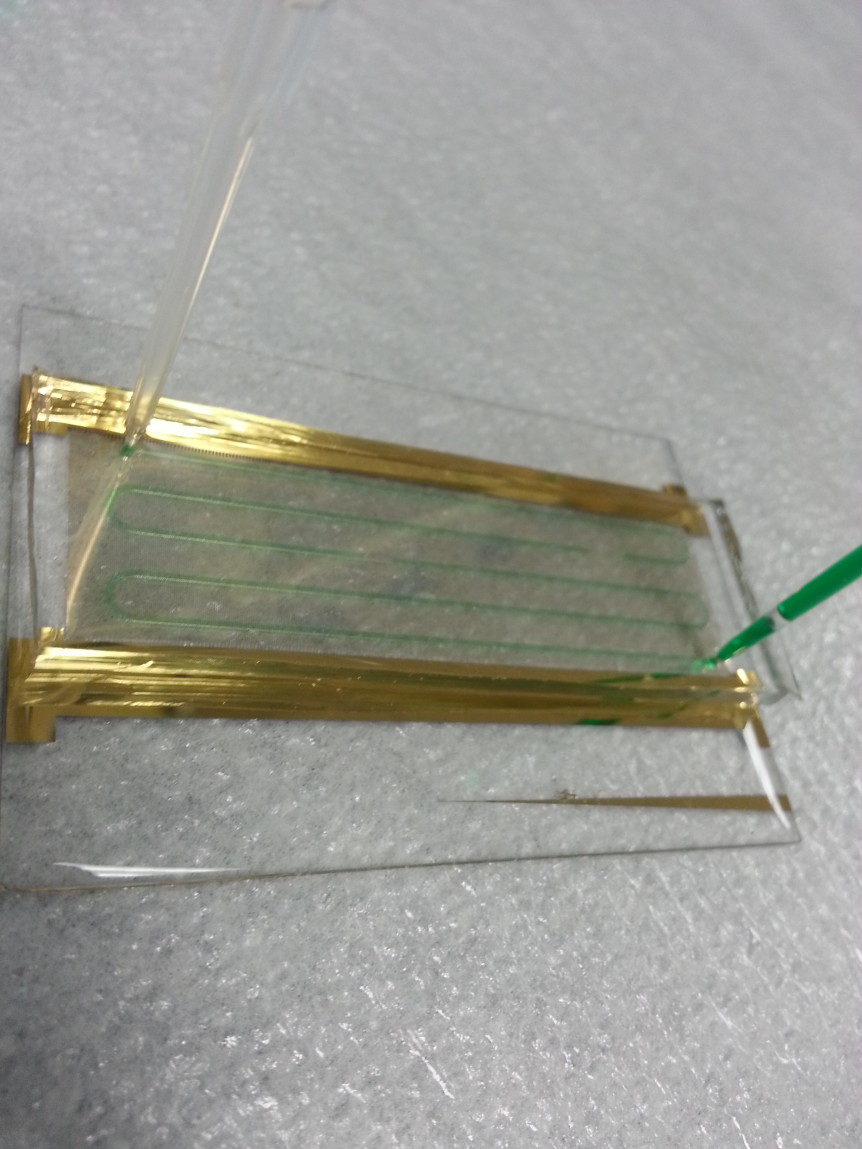For this project, we will be testing two prototypes made with different materials. One will be created using Polydimethylsiloxane (PDMS) and the other will be made from CNC machined plastic. Previous experiments with PDMS and glass have shown that there has been difficulty in bonding the two together. Since the channels will be created from PDMS, our device requires a strong bond between the substrate and the PDMS channels to prevent leakage. One method we discussed to combat this issue is by plasma bonding two layers of PDMS together. Plasma bonding is a technique that ignites a plasma which modifies the surface properties of PDMS to allow both layers of PDMS to stick together.
In order to determine whether plasma bonding will work with 2 layers of PDMS, I tested it on a sample glass slide. A thin layer of PDMS was coated over the surface of a glass slide; however for this test, I did not spin the PDMS on the slide, so there may have been some unevenness on the surface. With Tiffany’s help, who is a graduate student in Dr. Tang’s lab, we plasma bonded 2 samples. After the samples were cured, I ran water that has been dyed green through the channels to observe any leakages. In the first sample I tested, the green dye only moved a few millimeters from the input, and when I pressed down from the top of the PDMS, the liquid would move out of the channels; thus there was leakage. This was expected because when we took the sample out of the plasma machine, we noticed areas where it seemed like there was an air bubble, or empty spaces, which means that the PDMS layers did not bond well. In the second sample, I received more positive results. The fluid was able to move from the input to the output, so there was no leakage. This experiment revealed that PDMS will work through plasma bonding.
By Lydia Ameri, CD Fluidics

